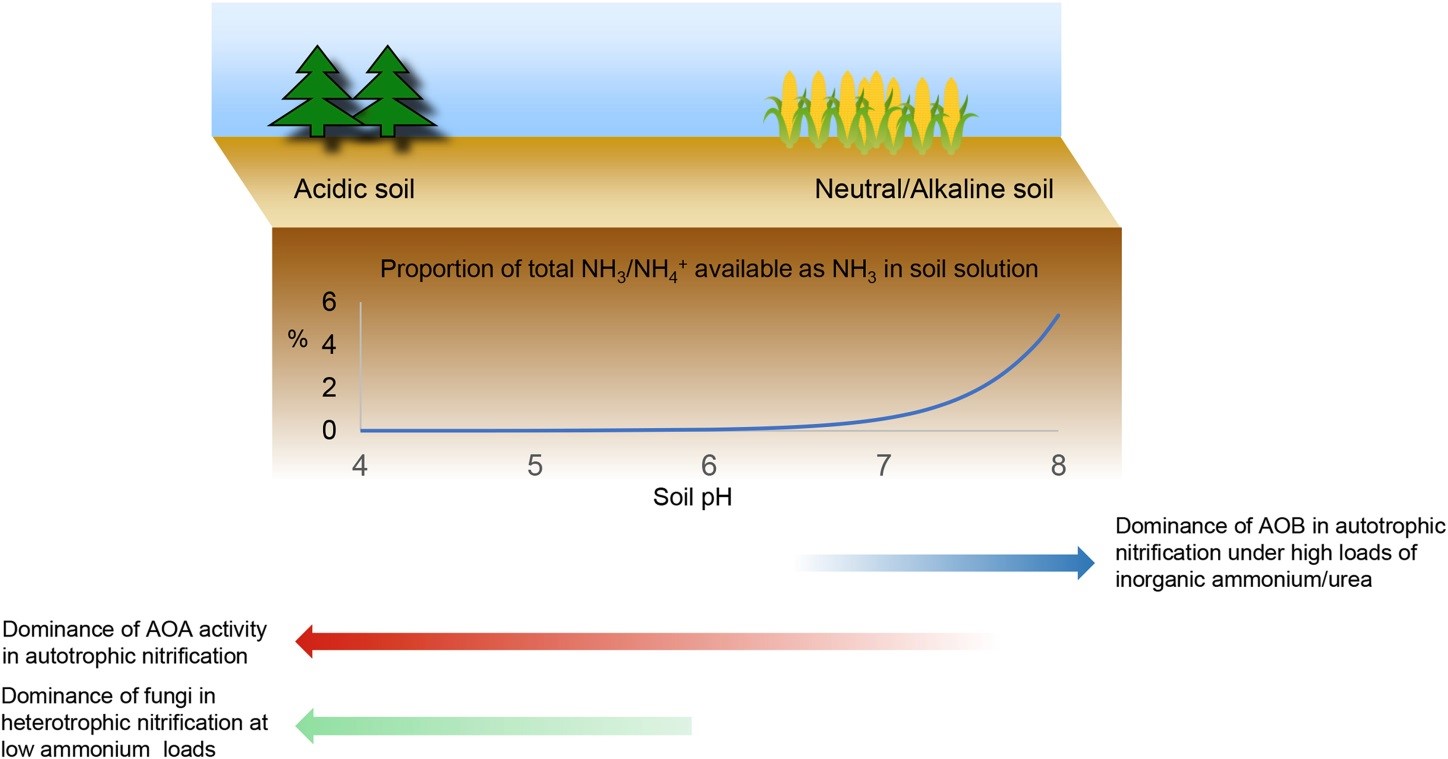Scientists from the Institute of Urban Environment, Chinese Academy of Sciences, have discussed and reviewed the recent progress in our understanding of nitrification and nitrifiers, specifically in acidic soils.
Nitrification, as a crucial step in nitrogen cycling and plant nutrition, is a biologically mediated process responsible for enormous losses of nitrogen fertilizer and a contributor to environmental pollution. At one time it was assumed that rates of nitrification are relatively low in acidic soils. However, more recent studies have demonstrated nitrification down to pH 3.0 and that the rate of nitrification can equal, or even exceed, that found in neutral soils.
Using the 15N isotope-dilution technique it was shown that net nitrification measurements can markedly underestimate gross nitrification in these natural and highly organic systems. Using selective inhibitors it has been demonstrated that heterotrophic nitrifiers can contribute to nitrification. While heterotrophic nitrification can be performed by a wide range of bacteria and fungi, inhibitor studies point to fungi to be mainly responsible.
Autotrophic ammonia-oxidizing bacteria (AOB), such as Nitrosomonas and Nitrosospira, have been known for some considerable time but have generally found to be inactive in acidic conditions.
The discovery of ammonia monooxygenase in uncultured archaea that were functionally active at low pH pointed to an autotrophic microbial group (ammonia oxidizing archaea, AOA) that might be adapted to low substrate (ammonia) concentrations and responsible for nitrification in the wider range of acidic grassland and cultivated soils. Obligately acidophilic AOA have more recently been cultivated while stable isotope probing has been used to confirm the dominance of AOA over AOB in acidic soils.
Detailed molecular studies using both 16S rRNA and amoA (ammonia monooxygenase sub-unit A) gene sequencing are continuing to expand our appreciation of the diversity of both AOB and AOA and how this varies over different pH ranges and in different ecosystems. Similar work is being directed towards nitrite oxidizing bacteria (NOB) but to date we do not fully know the role of pH in controlling NOB activity.
Such understanding of nitrification and nitrifiers will help develop new effective nitrification inhibitors and aid the management of nitrogen cycling in acidic soils.
The study was published in Soil Biology and Biochemistry entitled "nitrification and nitrifiers in acidic soils".
This study was supported by the National Natural Science Foundation of China, and the Strategic Priority Research Program of Chinese Academy of Sciences.
